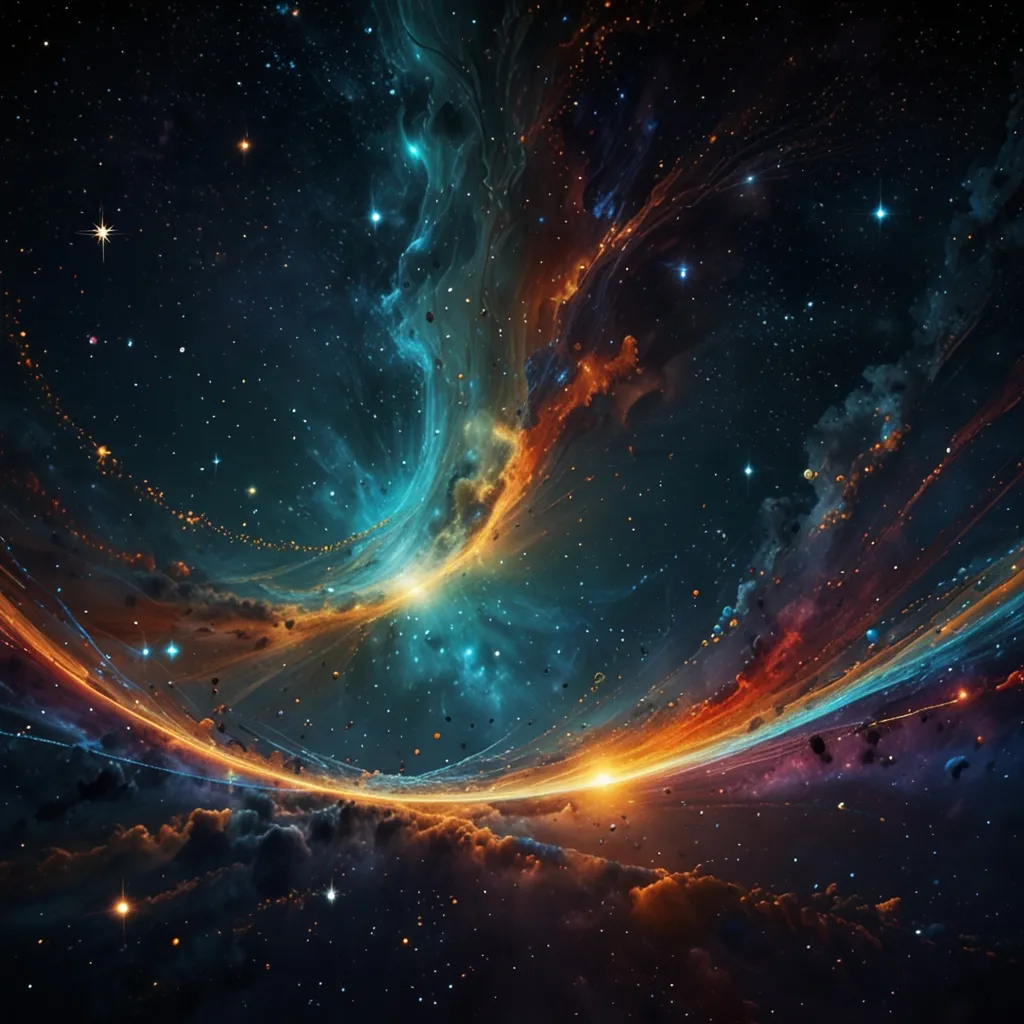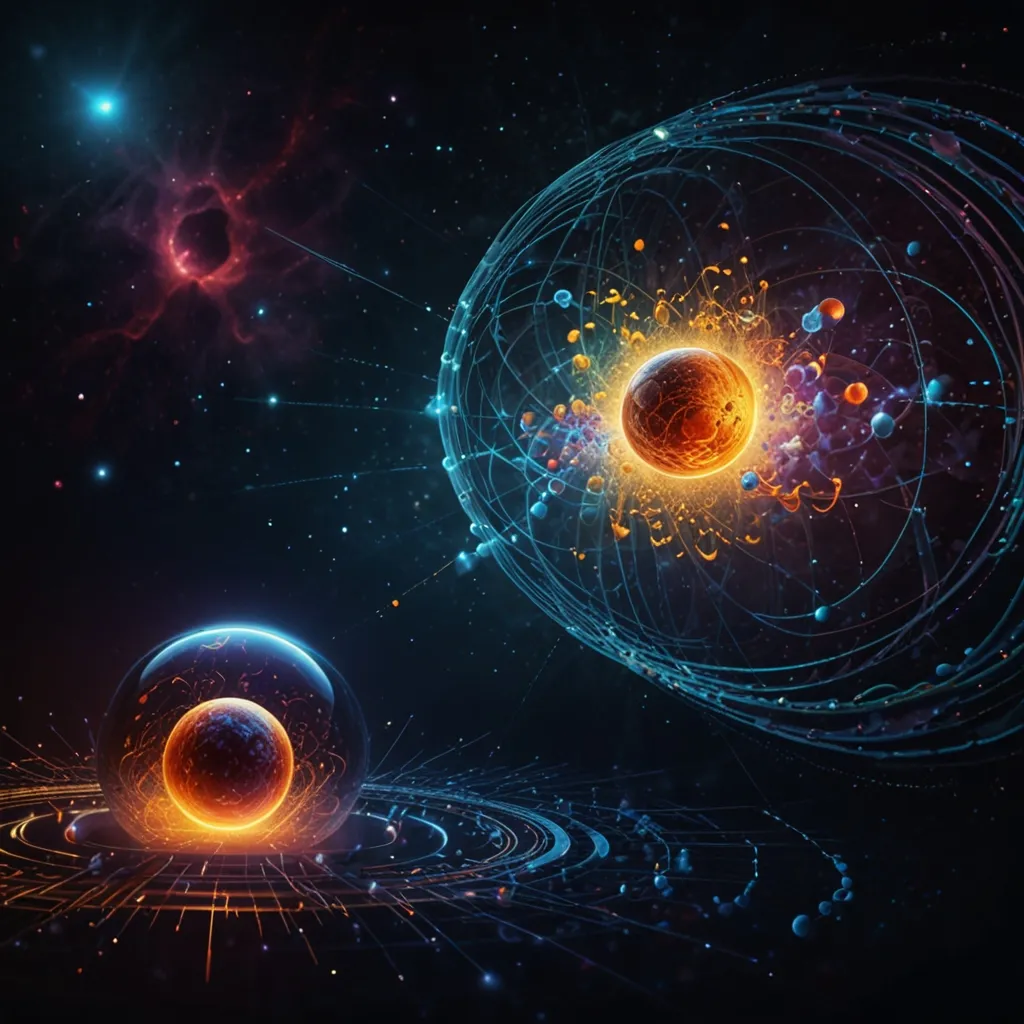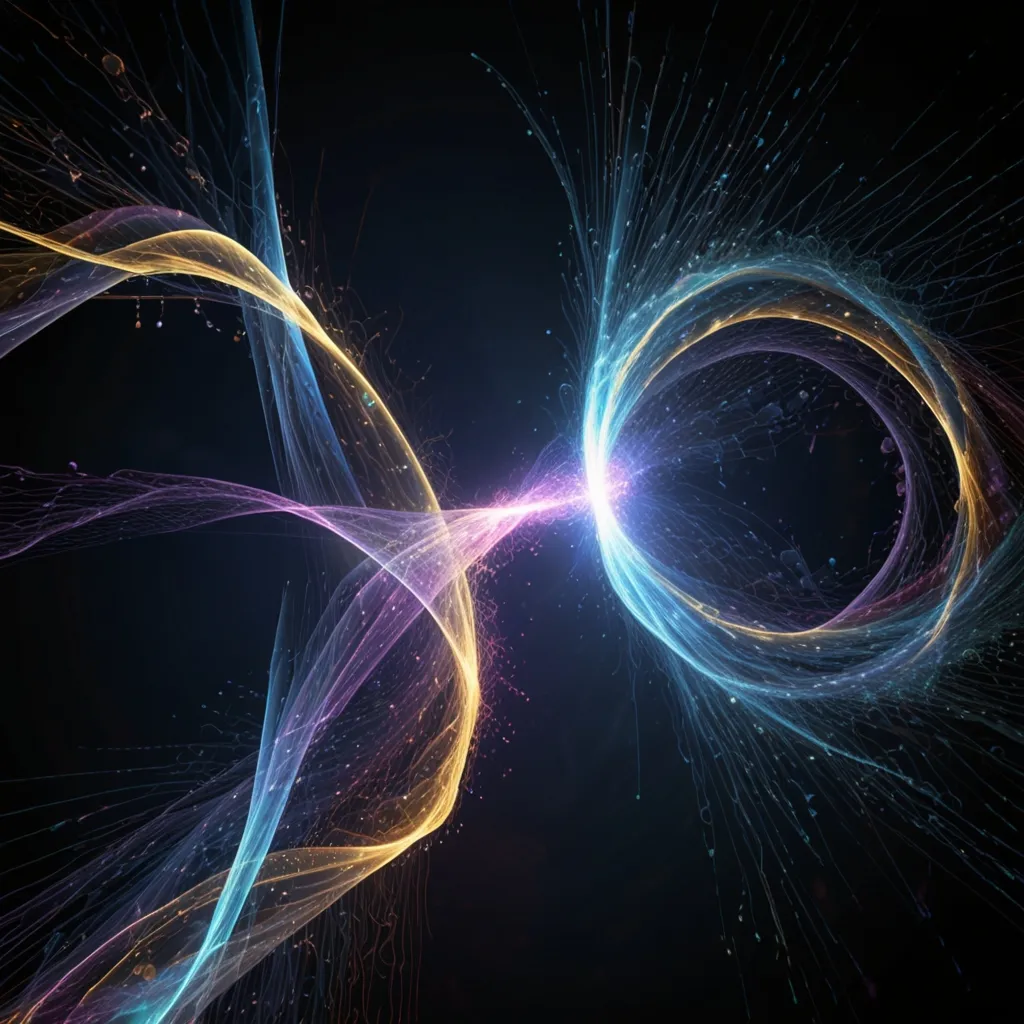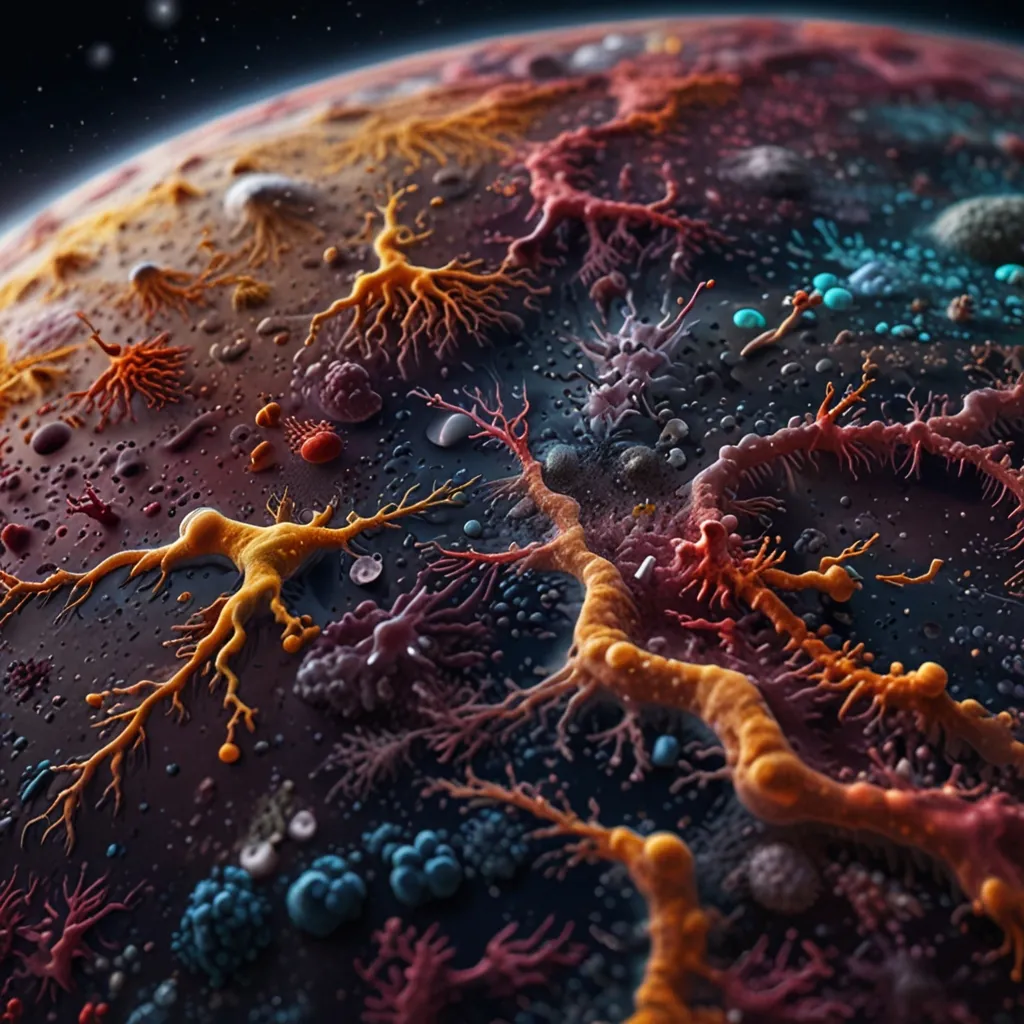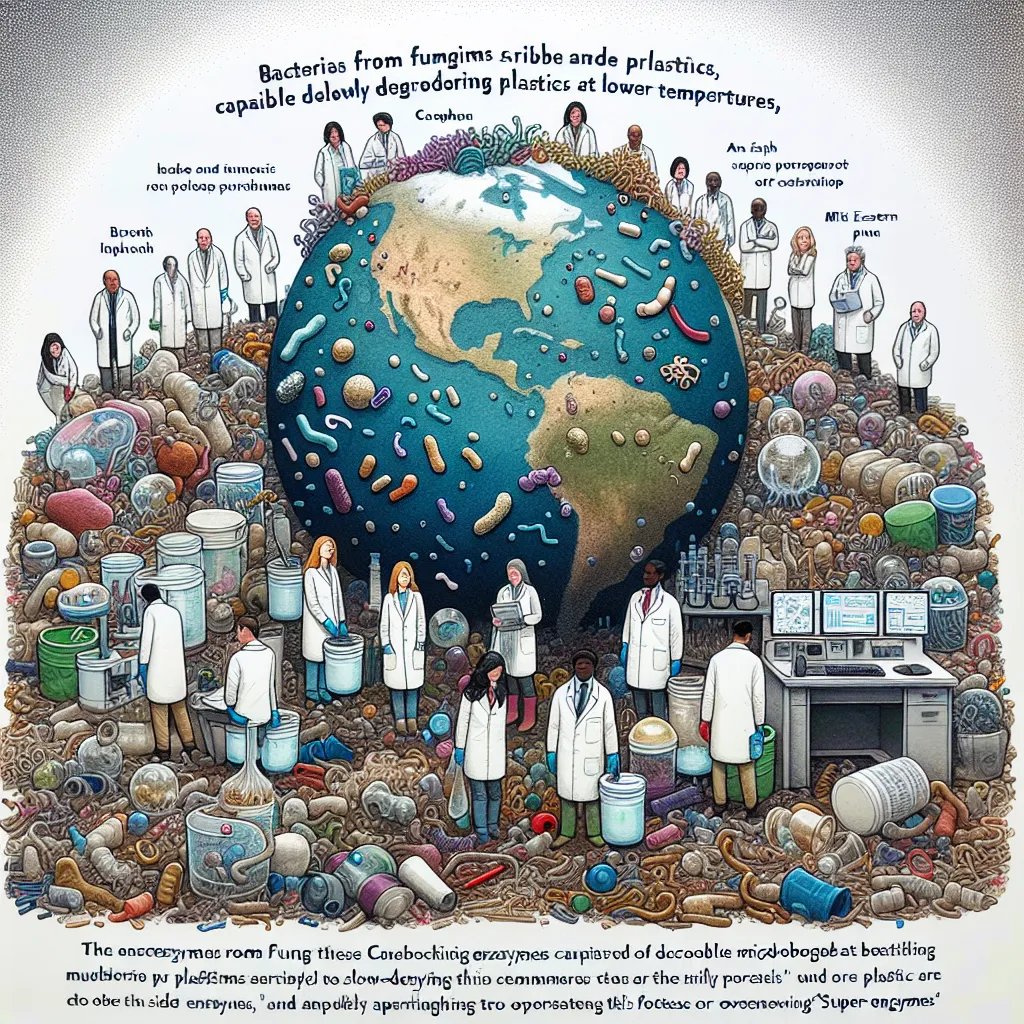We exist in two vastly different realms: the macroscopic world and the microscopic world. The first is familiar to us; it’s calm, predictable, and governed by Einstein’s equations of relativity. The second, the quantum world, is chaotic, bizarre, and unpredictable, described by the principles of quantum mechanics. These two realms appear incompatible in the scope of physics.
In the quantum world, three forces take charge: the strong nuclear force, the weak force, and electromagnetism. In the large-scale realm, gravity reigns supreme. However, gravity stands apart from the other forces, and its interrelation with them remains an unsolved puzzle.
Enter string theory. This theory attempts to bridge the gap between the macroscopic and microscopic worlds, potentially offering a unified set of equations that could describe all particles and forces in the universe – a so-called “theory of everything”.
Unlike the idea that the smallest particles are points, string theory posits they are tiny, vibrating strings of energy. Different vibrations of these strings create different particles, much like how different vibrations of piano strings produce different notes. This suggests that electrons, quarks, and other elementary particles are simply different vibrational modes of these strings, each with specific properties such as mass, charge, and spin.
An intriguing aspect of string theory is the emergence of a particle called the graviton, which is theorized to carry the force of gravity. This could be the key to fusing quantum mechanics with gravity, offering a model for quantum gravity.
Yet, confirming string theory through observation presents a significant challenge. These strings are extraordinarily small. Imagine if an atom were the size of the Earth, a string would be comparable to a two-inch piece of yarn. Detecting such minuscule entities would require a particle accelerator the size of the Milky Way.
Moreover, string theory requires a leap of imagination into higher dimensions. Beyond our familiar three dimensions, string theorists propose the existence of additional tiny, imperceptible dimensions. These extra dimensions could be akin to the fine details of a rug that aren’t visible from afar but become apparent up close.
The vibrational patterns of strings depend on the shape of these extra dimensions. This concept gives way to some fascinating cosmological predictions. Different shapes could result in different kinds of universes, suggesting the possibility of a multiverse. In this framework, our universe is just one of many, each with its own distinct properties.
Collisions between these membrane-like structures could generate colossal energy, potentially explaining phenomena like the Big Bang. However, this plurality of universes prompts skepticism. Critics argue that if string theory can model countless universes, it might be an elegant but non-specific mathematical construct.
Despite the debate, string theory continues to be a central focus for many physicists seeking a theory of everything. Its complex ideas challenge our understanding but also expand our horizons, proving that in science, revolutionary thoughts often start from counterintuitive bases.
